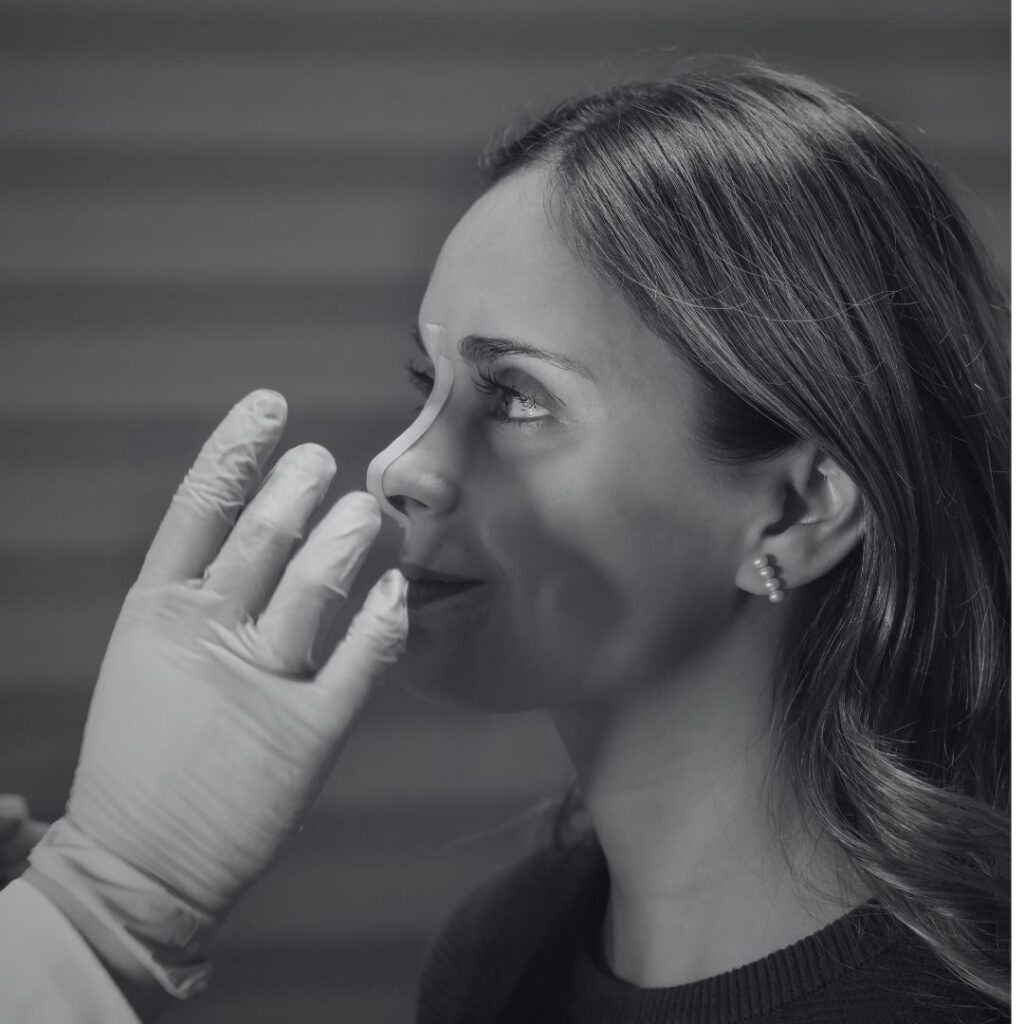SURGICAL PROCEDURE
Rhinoplasty
TREATMENT OVERVIEW
Rhinoplasty, colloquially known as a nose job, is a specialised surgical procedure that focuses on altering the shape, size, or functionality of the nose. Various factors can drive individuals to consider Rhinoplasty, including genetic predispositions, past traumas, or a general dissatisfaction with their nose’s natural shape or size.
The procedure is versatile, addressing a wide array of aesthetic concerns such as nose asymmetry, humps, or bulbous tips, as well as functional issues like deviated septums that can impede breathing. Mr Waseem Saeed, our Rhinoplasty specialist at KP Surgical, is one of the Uk’s most experienced surgeons. He is expert in achieving the desired outcomes, whether from an initial Rhinoplasty procedure or a Rhinoplasty revision.

THE PROCEDURE
The journey toward undergoing a Rhinoplasty starts with an initial consultation. This session is a cornerstone in the surgical process, providing a platform for the surgeon to thoroughly evaluate the patient’s facial anatomy, specifically focusing on the nose from various angles. The surgeon will also discuss the patient’s aesthetic and functional goals, laying out a detailed surgical plan that aligns with the patient’s expectations and what is surgically possible.
Anesthesia is a critical component of the procedure, and options are discussed in detail with the patient. While local anaesthesia combined with sedation is often sufficient for minor procedures, general anaesthesia will likely be recommended for more complex cases or for patients who prefer it.
The Rhinoplasty procedure itself can be performed using various techniques, each tailored to address specific issues. Incisions are typically made either inside the nostrils or a small access incision is made on the underside of the nose between the nostrils. Through these incisions, the surgeon can manipulate the bone and cartilage, either removing or adding tissue, to achieve the desired shape and size of the nose.
Once the reshaping is complete, the incisions are closed with extreme care, and the nose may be packed with gauze or bandage. Topical ointments may also be applied to the incisions to facilitate the healing process and minimise the risk of infection.
AT A GLANCE
- Surgery: 2 Hours
- Time off work: 10 Days
- Before you drive: 7 Days
- Return to Gym 4 Weeks
- Lift a small child: 7 Days
- Final Results: 3 - 6 Months
Actual return to activity times will be discussed and agreed with your Surgeon.
THE BENEFITS
You may choose to undergo a Rhinoplasty procedure for a number of reasons:

RISKS
THINGS TO AVOID
AFTER SURGERY
- Strenuous physical activities, including heavy lifting or vigorous exercise, for at least 2-3 weeks.
- Smoking and alcohol consumption, as they can impair wound healing and increase the risk of complications.
- Prolonged sun exposure to the surgical area
- Touching or manipulating your nose unnecessarily; be gentle to avoid disrupting the healing process.
- Wearing glasses that rest on the bridge of your nose for a few weeks; consider using contact lenses or taping your glasses to your forehead.
- Over-the-counter medications like aspirin or ibuprofen that can affect blood clotting; follow your surgeon's recommended pain relief regimen.
- Swimming pools, hot tubs, or saunas to avoid infection risks until your surgeon gives the green light.
- Blowing your nose forcefully for several weeks; use gentle saline nasal spray if necessary.
- Staying in dusty or allergen-prone environments that could irritate your healing nose.
- Any activity that increases blood pressure to the facial area.
- Smoking during the recovery phase, as it can constrict blood vessels and delay healing.
Post Op
AFTERCARE
- Medications: Post-surgery, patients are often prescribed a regimen of antibiotic ointments to prevent any potential infections and over-the-counter pain relievers to manage discomfort.
- Sun Protection: Protecting the nose from direct sunlight is crucial during healing. Patients are advised to wear broad-brimmed hats and sunglasses when going outdoors.
- Diet and Lifestyle: Maintaining a balanced diet rich in essential nutrients and vitamins, particularly Vitamin C, can significantly aid healing. Adequate hydration is also crucial. Smoking and alcohol consumption should be avoided as they can hinder the healing process.
- Regular Check-ups: Scheduled follow-up visits to the surgeon are essential for monitoring the healing process, making any necessary adjustments, and addressing any concerns or complications that may arise.

